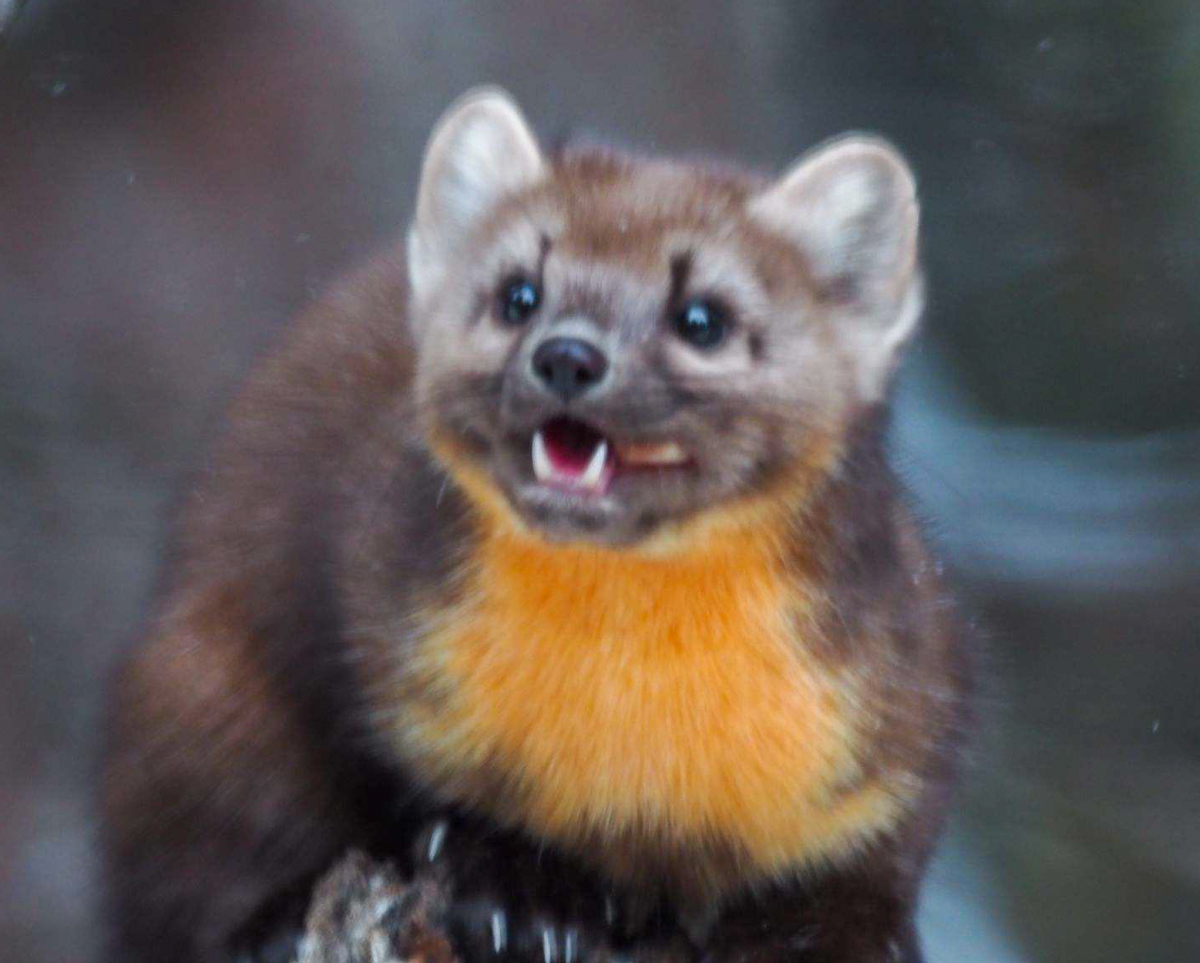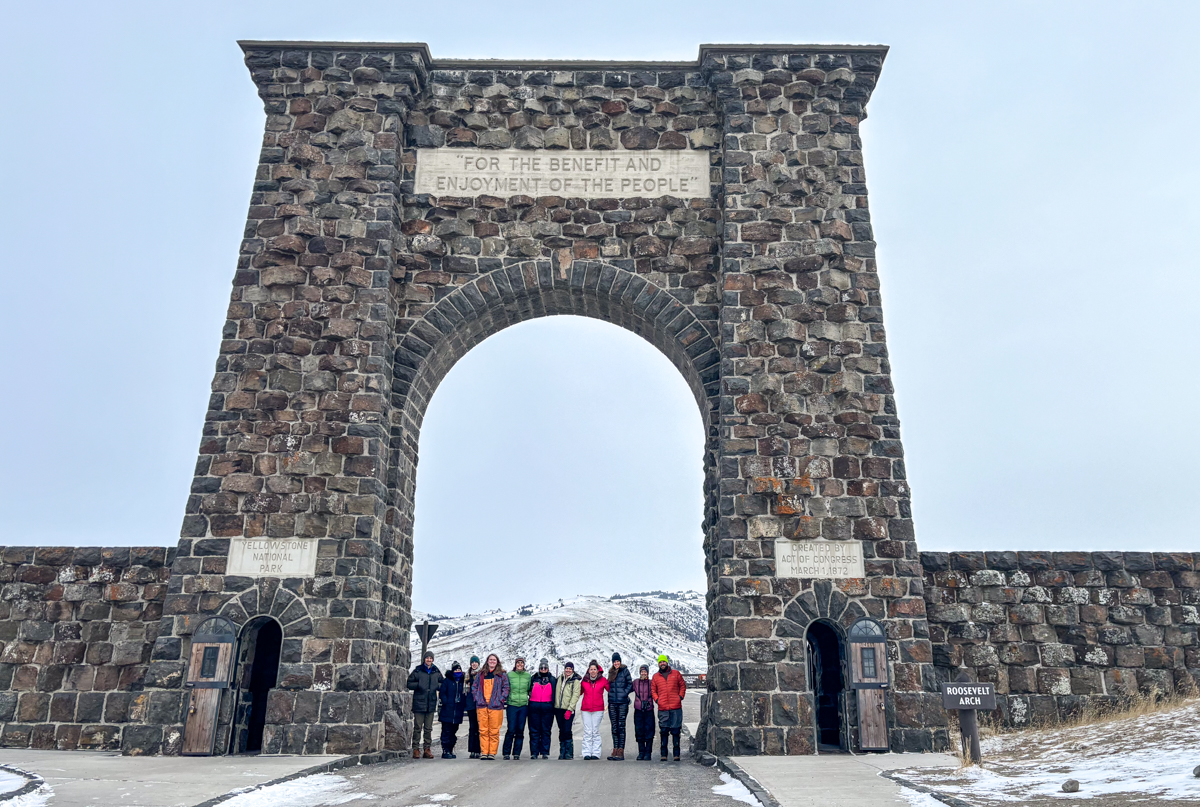We entered Yellowstone again in complete darkness and experienced the night sky. The number of stars far exceeds what most of us experience in North Carolina. From there we entered Lamar Valley just in time to view the sun coming up over the Absaroka mountains. It was the most spectacular view.

Lamar Valley at sunrise
As we continued into the park, we spotted a bison carcass being scavenged by a juvenile bald eagle and approximately 25 ravens. Maybe 50 yards east were 2 bedded wolves, lying in the snow across the valley. We wondered if maybe they had fed on the carcass which would explain their satisfied, docile behavior.
Afterwards we continued on to Silver Gate, MT to the home of Dan and Cindy Hartman but before we arrived we were blessed to find 2 moose, a cow and a calf, having a morning meal of willow plants. Dan and Cindy, who are wildlife photographers and naturalists, shared with our group some of their recent work creating movies about nature. Our feature film today was called “Harvest,” which was his new film on the impact of the loss of whitebark pine trees on a multitude of animals. This film was based on his study of middens, which is a cache of pine nuts made by red squirrels. After the video we talked about the invasive species, pine bark beetle which is killing off many of these tress and affecting the ecosystem. He shared with us that his mission is to encourage others to respect and appreciate nature through a deeper connection with all living things. One of our team asked Dan what we could do to help protect whitebark pine. His response: “It’s going to be up to our children to save them.” As we were leaving the Hartmans we were thrilled to see a beautiful fuzzy pine marten, a member of the weasel family, scampering up a snag outside his cabin. In addition, we saw numerous birds including some Clark’s nutcrackers, Steller’s jays, mountain chickadees, pine grosbeaks and a red-breasted nuthatch.

Pine marten at Dan and Cindy Hartman’s house. Photo by Adam Smith.
The other animals we spotted today include: lots of bison, more dippers, ducks, pronghorns, eagles, elk, ravens, a ferruginous hawk and two red foxes. We ended our day by exiting the park during daylight hours so that we could see the Roosevelt Arch.

Group at Roosevelt Arch
Even though it was a mere 3 degrees, we rewarded ourselves by taking a relaxing dip in the Yellowstone Hot Springs, a private spot outside of the national park where hot groundwater is used in manmade pools to create a lovely spot. This was much needed after the frigid week we’ve had. Our bodies should be ready for more park action tomorrow after soaking in the mineral rich geothermal waters which will help with our aches and pains from the physical activity we have endured.
